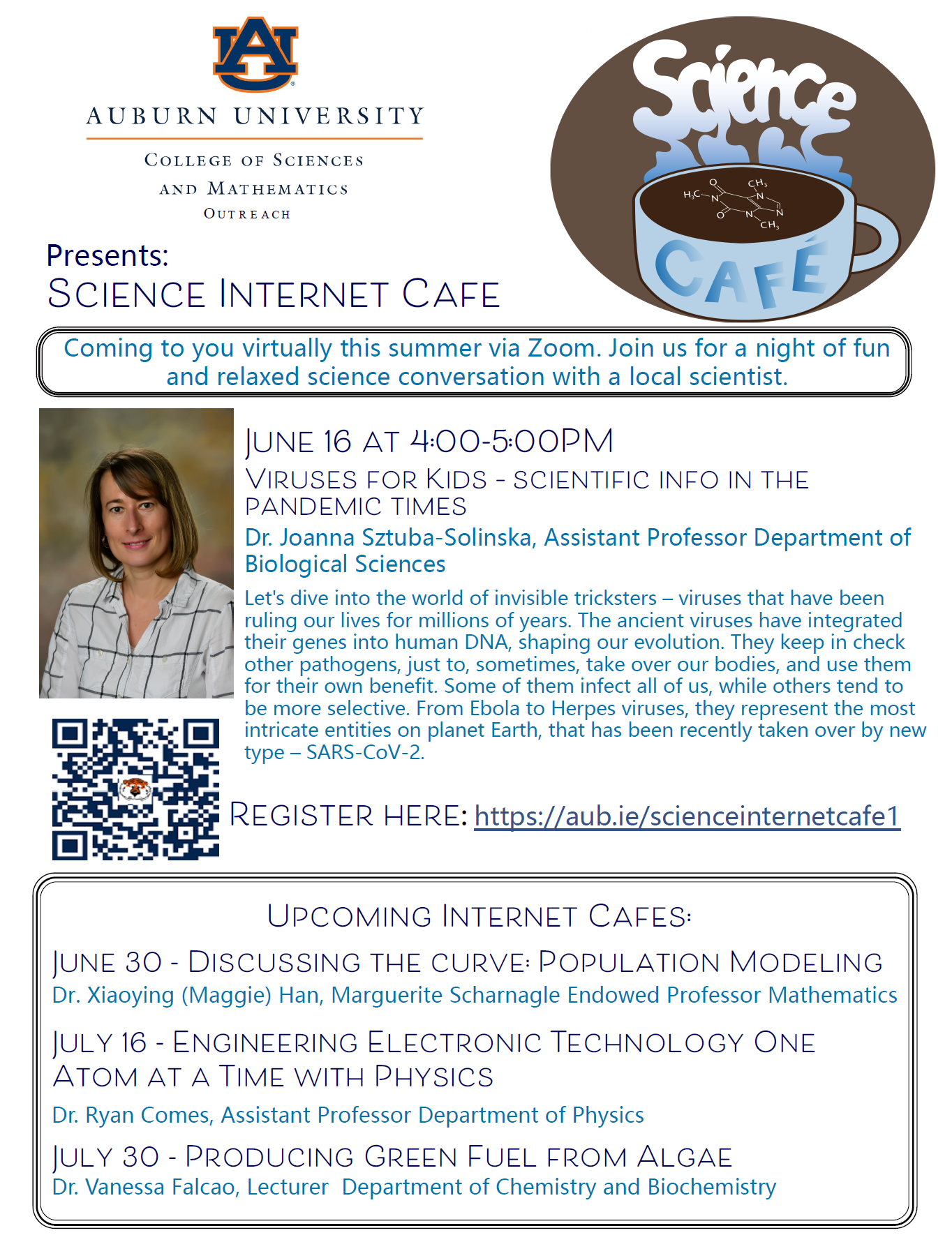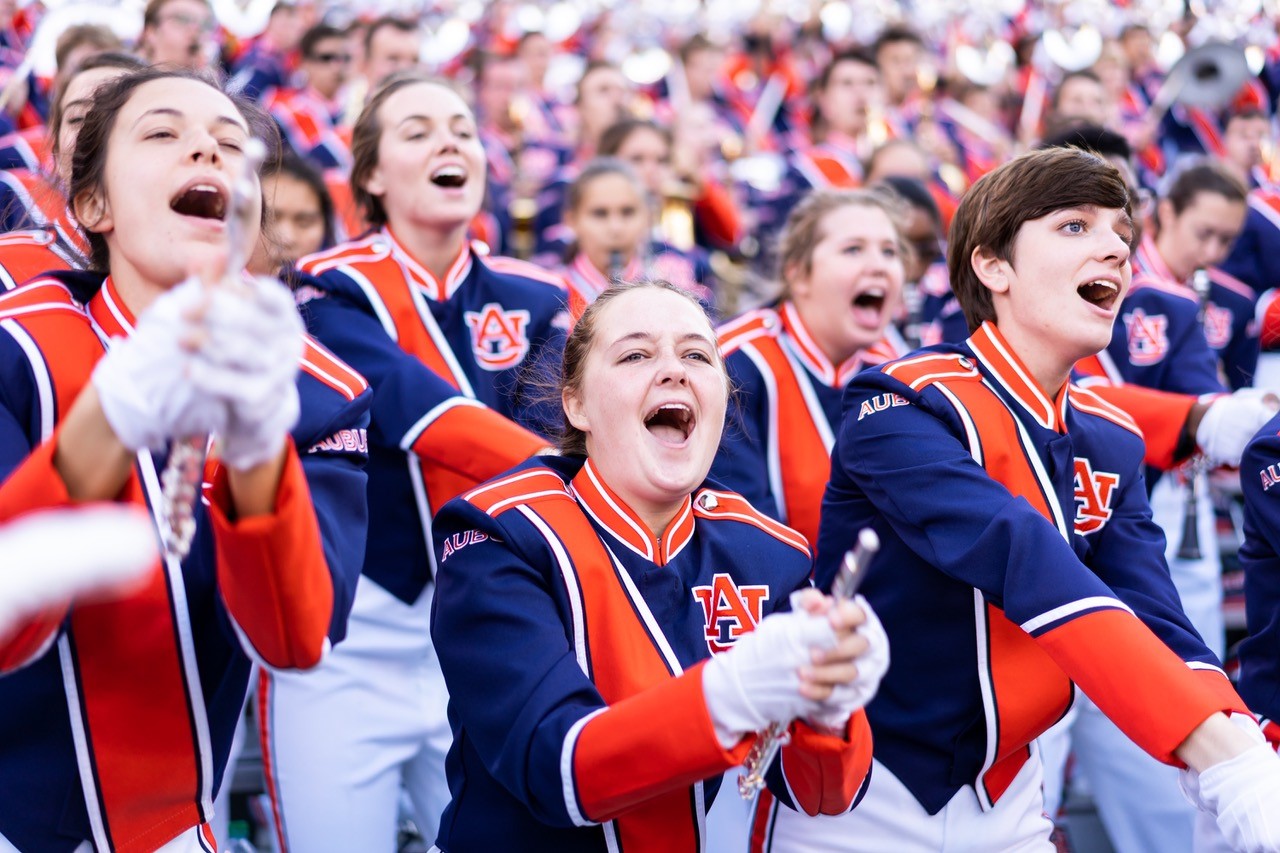
Tuesday, June 09, 2020 |
||
| ... |
Auburn Professor to be Part of NASA-funded Team Tasked with Studying Effects of Urban Pollution in Precipitation“I am very excited to be a part of this team and cannot wait to begin work on this NASA-funded project,” said Mitra, a physical geographer and climatologist focused on researching the impacts of urban growth on local climate, especially in the area of heat and precipitation variability. | |
| ... |
Join Joanna Sztuba-Solinska and COSAM Outreach at the June 16 Virtual Science Internet CaféRegister to participate in “Viruses for Kids – Scientific Info in the Pandemic Times” via Zoom. | |
| ... |
Physics Alumnus Embodies Patience, Perseverance, and Tenacity through Career Researching Biophysics and Teaching as an Assistant Professor at Loyola University Chicago“Physics has always been a quantitative field, and as the world becomes increasingly data driven, the training that physicists receive positions them to make contributions in an endless amount of fields,” explained Brian Cannon, who earned his bachelor’s degree from Auburn University in physics in 1997. 
| |
| ... |
Student Research Spotlight - Brett CockeBrett Cocke is researching the relationship between mitochondrial protein acetylation and the increased damage seen in diabetic hearts following myocardial infarctions, also known as heart attacks. | |
| ... |
COSAM Senior Prepares for Career Studying Infectious Diseases“COSAM has prepared, and continues to prepare me for the next chapter of my life by constantly challenging me in all aspects of my school work,” Swanner said. “By having classes that are cumulative, and that directly lead into more difficult classes, it forces me to retain the information I learn. By keeping all of this information in my mind, I can more efficiently understand the things I am learning and can challenge myself to do better.” | |
| ... |
Department of Physics Captures Photos of Supernova 2020jfo“One light-year is the distance light travels in one year. To see anything, we need to collect light from it. For something at a distance of 52 million light-years, it would have taken 52 million years for the light to reach us. So, if we see a supernova today, the supernova happened 52 million years ago,” Halford shared. | |
View previous issues of COSAM Today.We want to hear from you! Share your good news with us.COSAM Today is published by COSAM's Office of Communications and Marketing. Questions? Send an email to mcg0052@auburn.edu. |
||





